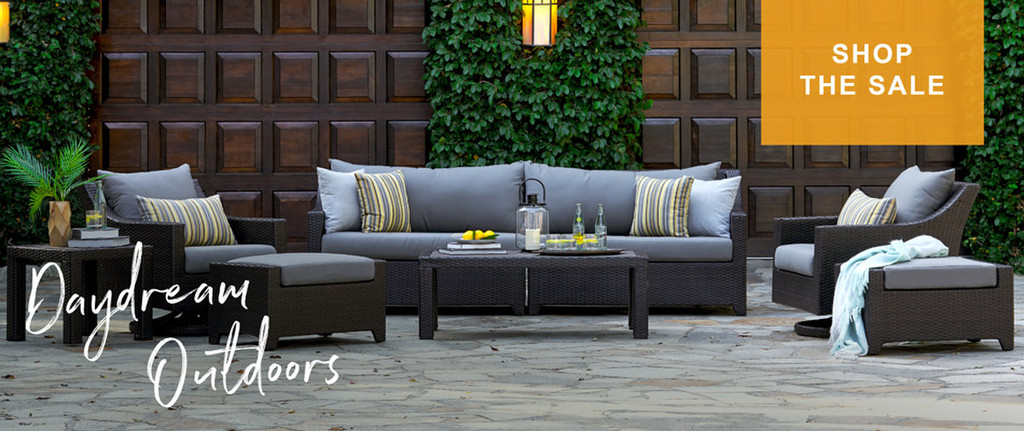If you're interested in a unique approach to choosing outdoor furniture, consider adding style to your patio by incorporating updated indoor furniture or repurposing your indoor furniture pieces for outdoor use. Outfitting your patio with indoor furniture may seem difficult, but with these tips, you can repurpose and achieve a versatile outdoor set.
Prep and Prime Wood
Indoor materials such as wood are not often prepared to face the elements of outdoor weather, but with a little physical work and help from the local hardware store, those pieces can be prepared to endure even the harshest of climates.
- Sand the piece down first. Since most indoor pieces are not made of treated wood and use glue and finishes made for indoor temperatures, a better coat of protectant must be applied. In order to do that, you must sand the furniture to bare wood so that the finish you select will adhere.
- Prime and paint. Most clear finishes do not protect against UV rays as well as paint. Start with a quality primer, followed by a thick coat of exterior latex or oil-based paint. Multiple coats of spray varnish with added UV blockers is your best option to maintain that natural wood look.
- Seal every nook and cranny. No surface of the wood should be left uncovered. Thoroughly encapsulate every joint, leg, and crack with a thorough coating of sealant to provide ultimate protection.
- Recoat every year. Furniture constantly exposed to the elements needs to be recoated often, once every 1-2 years, in order to stay protected. A fresh coat of paint and sealant will also keep your furniture looking new and clean.
Resist Rust on Metals
Metal, though a strong material, can still fall prey to the different types of weather on your patio.
- Scrape off any existing rust. Use a metal brush to scrape off any rust and prepare the material for coats of paint. Sand off any remaining rust and hand sand any crevices or curves.
- Clean the surface. Properly clean the surface of the metal with a solvent to ensure there is no dirt or debris preventing your coats of paint or primer from adhering.
- Spray on primer and paint. Spray paint is the best way to coat metal furniture. Stick with a high-quality white primer under light colors and a darker grey under darker paint colors for uniform coverage. Use a clean chip brush to fix any drips.
Have Fun with Fabrics
Indoor fabrics are vulnerable to fading in the sun and battling mildew from wet weather, but fabric furniture can still be used outdoors.
- Replace cushion and pillow covers with outdoor fabric. Visit your local craft or fabric store to pick up some outdoor fabrics and materials with which to recover your outdoor cushions and pillows. Utilizing a fabric created specifically for outdoor weather will help your fabrics last longer and avoid accumulating mold and mildew.
- Waterproof unchangeable fabrics and pillows. Pick up some spray-on waterproof fabric sealant and evenly cover all fabrics for moisture and sun protection.
No matter how sturdy the materials or how much weatherproofing is done, the furniture will eventually wear down from the elements so be sure to cover or remove furniture from heavy rains or snows as much as possible. If you're looking to add more accessories and fabrics to your patio/dining set, check out our outdoor furniture offerings.





